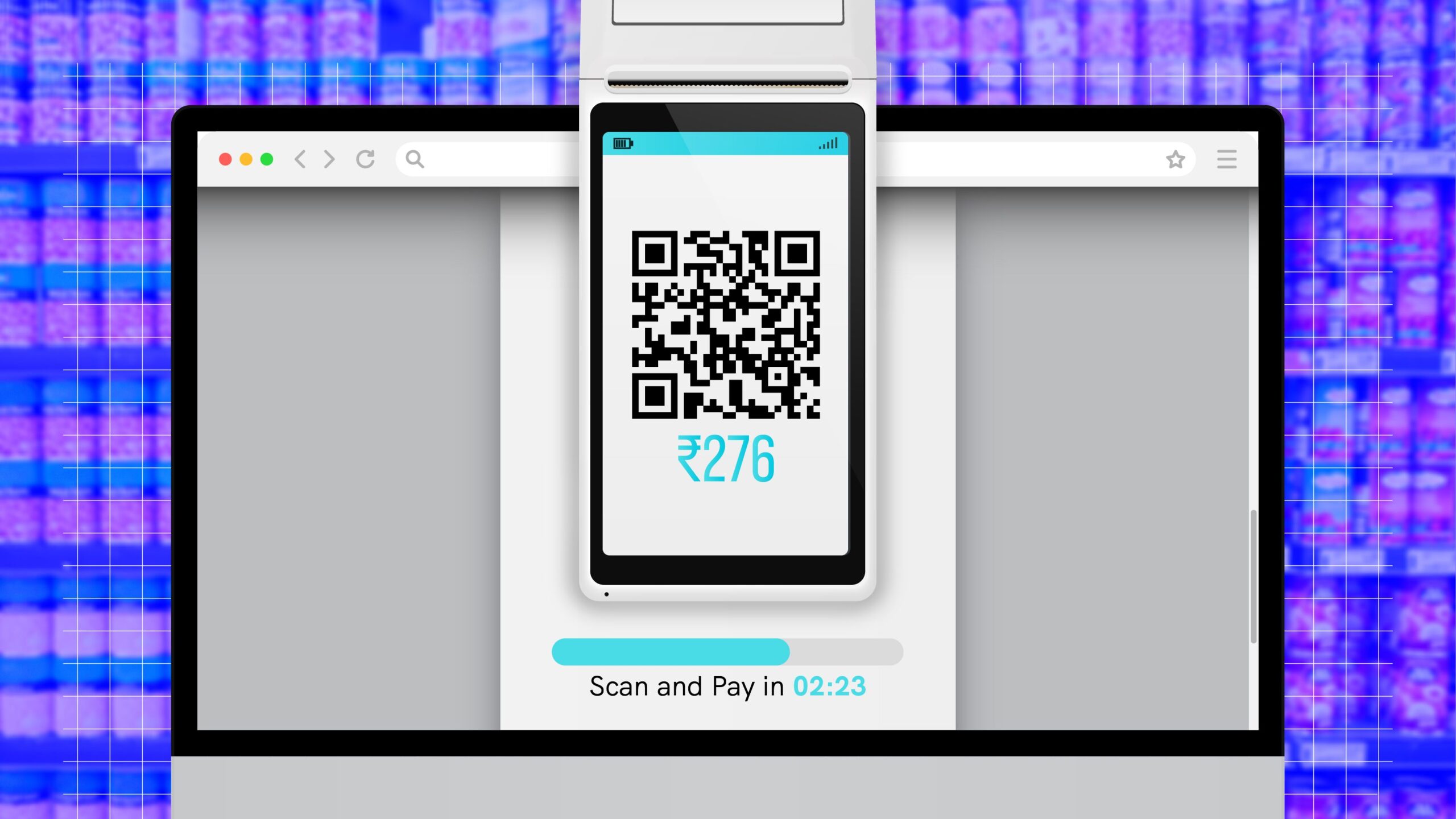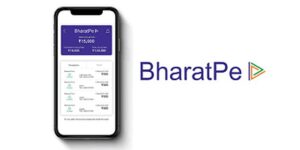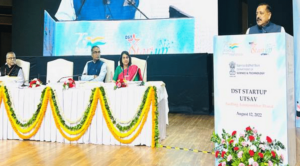At the Global Fintech Fest last month, Razorpay, known for its online payment gateway services, widened its focus to the offline market with new offerings aimed at brick-and-mortar shops and small businesses.
The fintech company introduced a sleek, two-screen point-of-sale (POS) device designed to compete with Pine Labs’ Hub POS terminal, and also launched a budget-friendly soundbox priced between Rs 450 and Rs 850, directly challenging Paytm and PhonePe’s dominance.
“We’ve made significant strides in the offline market, commanding a 3% market share in the POS device category. Our goal is to grow this to 12% over the next two years. To achieve that, we’re investing in our sales team, placing a strong emphasis on enhancing our presence in the offline market,” Rahul Kothari, COO of Razorpay, told YourStory.

Razorpay’s move into the offline space mirrors a broader trend among digital payment companies in India. Retailers typically use two types of payment processing hardware: card machines and soundboxes. Card machines, which offer tap-to-pay or swipe-to-pay options, are predominantly supplied by banks.
According to RBI data, several major banks have each deployed over 1 million card machines. On the other hand, soundboxes—devices that provide audible transaction confirmations—have become a popular payment solution, particularly for small merchants. Paytm, a pioneer in this market, has deployed 8.5 million devices while PhonePe has rolled out 3.25 million, according to a report by BofA Securities India Ltd.
Much like Razorpay, Infibeam Avenues, a two-decade-old payments company, has entered the hardware space with its own device, the CCAvenue SoundBox. This device features a dynamic QR code screen and supports NFC-based contactless payments.
“Our CCAvenue SoundBox Max is designed to reshape the payment landscape by providing flexibility and convenience in accepting payments. It integrates multiple payment options into a single device, ensuring that merchants can cater to a wide range of customers efficiently,” said Vishvas Patel, Joint Managing Director of Infibeam Avenues, during the device’s launch at GFF.
Patel explained that the decision to incorporate debit and credit card functionalities was driven by market demand for a more comprehensive payment solution beyond UPI. “Many retailers were losing potential sales due to the limited payment options available,” Patel explained. “The CCAvenue SoundBox Max addresses this challenge by enabling secure and efficient transactions through its support for both card payments and UPI.”
Other players are also making moves in this space. Pine Labs, one of the largest Indian startups powering payments in India with its POS machines, launched a soundbox with NFC-based card payment capabilities. Paytm, a pioneer in the soundbox market, has also added a similar NFC feature to its offering.
NFC (Near Field Communication) payments allow customers to make contactless transactions by tapping their card on a compatible terminal. When paired with a soundbox, this low-cost device allows small merchants to accept card payments and receive instant audio alerts for each successful transaction.
As physical retailers increasingly demand integrated payment solutions, companies like Razorpay and Infibeam Avenues are responding by introducing hardware such as POS devices and soundboxes. The goal is to capture a larger share of the offline market, competing not only with established players but also with newer entrants.
“Basically there is a checkout battle going on,” Vikram Chachra of 8i Ventures told YourStory.
Charcha explained that most companies that accept payments online, today have multiple payment gateways, making it a “lousy business” for gateway companies to make money when there is a lot of competition.
“These companies are fighting for wallet share from the same companies they’re already serving. What you’re doing is you’re milking the same user base, expanding the share of the wallet,” he noted.

The need for diversification
Take Lenskart, for example, a company that operates both online stores and physical showrooms. For its online sales, Lenskart likely uses several payment gateway providers, such as Razorpay, PayU, or Paytm, to handle transactions for the thousands of glasses it sells daily.
An orchestration platform like Juspay’s HyperCheckout determines which gateway to use for each transaction based on factors such as pricing, speed, and volume. In this case, Razorpay does not directly control which gateway is selected for each transaction.
However, at Lenskart’s physical stores, Razorpay’s POS system is likely the exclusive payment processor, providing it with a higher revenue share from in-store transactions. “Companies are making sure that if they get an entry into the online site, they will also take entry to the offline site,” Chachra said.
This offline push is largely driven by growing demand from retailers looking to digitise their payment systems and offer additional services like EMIs and buy now pay later (BNPL). “The lines between online and offline are getting blurred,” quipped Patel of Infibeam Avenues.
In addition to capitalising on offline growth, companies are also striving to stand out in the crowded online payments market. Last year, the Reserve Bank of India issued only seven payment aggregator licenses, while this year it has issued licenses to over 30 companies.
“As the online payment market becomes increasingly saturated, startups are seeking to diversify their revenue streams by moving into the offline space. This allows them to tap into new growth opportunities and reduce their dependence on the highly competitive and low-margin online segment,” noted Aishwarya Jaishankar, COO and Co-founder of Hyperface—a fintech software-as-a-service (SaaS) company which helps brands launch and manage co-branded credit cards.
“The point-of-sale machines space is largely dominated by private sector banks offering card-only POS machines. Now with UPI, BNPL etc, people are looking for a one-stop solution for payments,” commented Varun Tangri, Founder of QueueBuster—a fintech SaaS startup that develops cataloguing and inventory management software for POS devices.
Scaling internationally
Beyond offline, some of the companies YourStory spoke to are also looking to access international markets for additional revenues.
One of them is Razorpay, which is looking to tap merchants outside India.
“We have operations in Malaysia and the Middle East, and now we are about to launch in Singapore. Roughly 10% of our revenue comes from international markets,” Kothari added.
Some international markets also offer higher margins compared to India.
“Fundamentally, India is a tough market. A lot of companies underestimate how difficult it is in India to scale. In payments, you can’t make a lot of money. Consumers are very demanding and expect very good service levels,” he explained.
Razorpay has also applied for a cross-border payments aggregator (PA-CB) license, which enables the import and export of goods and services in the online mode. Only four companies, including Amazon Pay and Cashfree Payments, have received this license.
“Cross-border business is a strong focus area for us. The export business is something which we’re scaling quite well while we need to scale imports more. And for that, we are waiting for the license. We already have soft commitments from a lot of merchants,” Kothari added.
Cashfree Payments, a Bengaluru-headquartered digital payments startup, was the first to acquire a PA-CB license from the RBI in July. Co-founder Reeju Datta hopes that it will help bring Rs 100-150 crore in processing revenue over the next two years.
With the license, the platform will support merchants in over 90 countries. It will allow businesses to accept payments not only through international cards and PayPal but also via local electronic payment options like ACH in the US and SEPA in Europe.
The company is particularly focused on UPI integration for international brands to enable Indian customers to shop on global websites and pay in INR, which will then be converted to the foreign currency of the seller, making cross-border transactions smoother. It is also exploring more use cases for the license.

More room to grow
According to The Indian Payments Handbook (2023–2028), released by PwC at the GFF, the digital payments industry in India has seen remarkable growth and is projected to continue expanding.
The value of digital payment transactions grew by 58% from FY 2021–22 to FY 2022–23, reaching Rs 113.94 billion. This growth is expected to be sustained, with transaction volumes across retail digital payments anticipated to double by FY 2026–27, the report added.
However, “the offline market represents a much larger opportunity than the digital commerce space, with cash still being the dominant mode of payment in many parts of India,” Aishwarya Jaishankar said. According to RBI data, cash in circulation has surged from Rs 13.3 lakh crore post-demonetisation to Rs 35.9 lakh crore as of May 2024.
“Despite the rise of digital payments, especially through UPI, a vast portion of transactions continues to occur offline, particularly in rural areas and smaller towns. This presents a massive, largely untapped market that payment startups are eager to capture,” she added.



![Read more about the article [Funding alert] Bengaluru-based agritech startup Fyllo raises Rs 3Cr in seed round from IAN](https://blog.digitalsevaa.com/wp-content/uploads/2021/06/Imagehya8-1623041812546-300x150.jpg)






